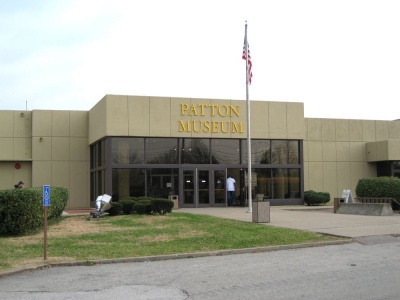Fort Knox (2)


Fort Knox (2) (-) - Established Jan 1918 as Camp Knox and named for Maj. Gen. Henry Knox the nations first Secretary of War
Fort Knox (2) History
At the beginning of World War I Congress initially leased 10,000 acres in the vicinity of Stithton. On 25 Jun 1918, Congress allocated $1.6 million to purchase 40,000 acres. Construction of the camp facilities began in July 1918, but was cut short by the Armistice in November 1918 and by Army strength reductions in 1921-1922. The post was closed as a permanent installation in 1922, but continued to serve until 1932 as a training center for the V Corps area, for reserve officer training, Citizens Military Training Camps, and for the National Guard.
Congress designated Camp Knox as a permanent garrison on 1 Jan 1932, and changed the name to Fort Knox. On 16 Jan 1932 the 1st Cavalry Regiment arrived at Fort Knox and traded its horses for combat cars and was joined in 1936 by the 13th U.S. Cavalry Regiment, which in turn traded its horses for tanks and then comprised the 7th Cavalry Brigade (Mechanized).
The Armored Force was born on 10 Jul, 1940, with the Headquarters, Armor Force and the Headquarters, I Armored Crops established at Fort Knox. On 15 Jul, 1940, the 7th Cavalry Brigade (Mechanized) became the 1st Armored Division.
The Armored Force School and the Armored Force Replacement Center were officially established at Fort Knox Oct 1, 1940. The school trained armored force soldiers in military fundamentals and in specific areas such as tank gunnery, armor tactics, communications, and maintenance. As the armored force grew and the U.S. entered WWII, the school expanded proportionately. From an initial cadre of 155 officers and 1,458 enlisted men in October 1940, the school grew to more than 700 officers and 3,500 enlisted men by May 1943. The school alone used more than 500 buildings, many of them "temporary" wooden structures built to meet the expansion of the post. Many of those temporary buildings are still in use today.
The Armored Force School, at the peak of its operation during the war, operated on two daily shifts to satisfy the demand for qualified armor soldiers. The training reflected the rapid evolution of armored warfare doctrines, which changed constantly in the face of battle experience and in the alterations to the force structure and its tables of organization and equipment. Some of the buildings used by the school reflected these new doctrines and techniques. The building at 1538 Eisenhower Ave. was built in the shape of a Landing Ship Tank (LST) to train soldiers how to load and unload armored vehicles for transport at sea. The building still stands today and is used by the Patton Museum for storing historic armored vehicles. By 1943, Fort Knox had expanded to 106,861 acres and had 3,820 buildings, compared to 864 buildings in 1940.
Current Status
|
{"selectable":false,"width":"500"} |
Location: Maps & Images Lat: 37.8857 Long: -85.9607 |
Sources:
Links:
Visited: 18 Nov 2006
Fort Knox (2) Picture Gallery
|
Click on the picture to see a larger version. Contribute additional pictures - the more the better! |
-
Tank Exhibit at Patton Museum
-
Tank Exhibit at Patton Museum
-
Helicopter Exhibit at Patton Museum


